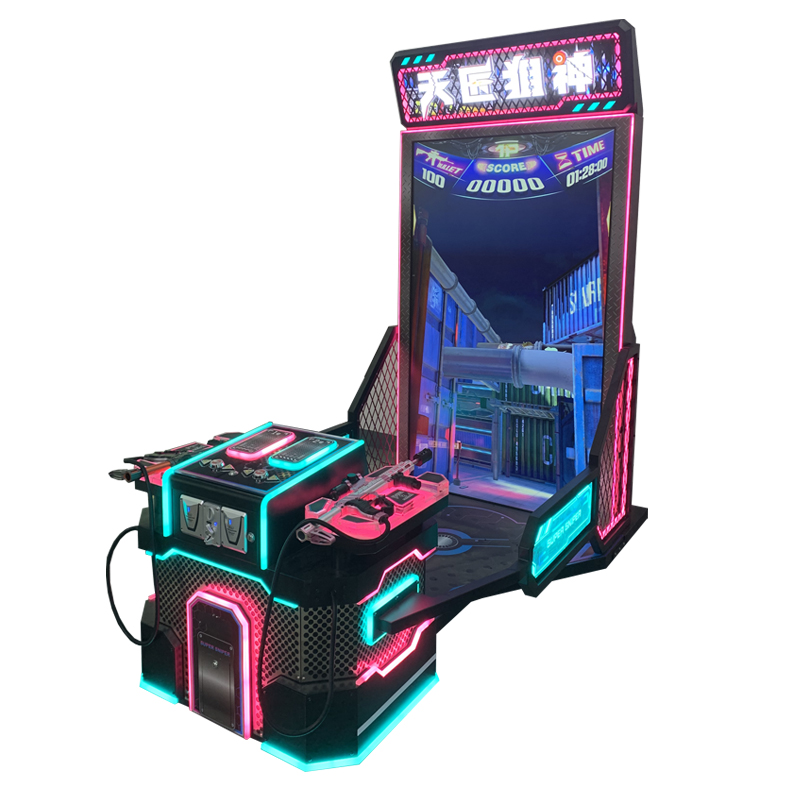Claw crane machines operate with a mechanical arm and an electromagnetic control system, whereby the claw grip strength is adjusted to give more difficulty in picking up prizes (with less success), varying from about 10%. On the other hand, arcade game machines use a central processing unit (CPU) and graphics processing unit to process data by rendering 60 frames per second on screen and performing player-centric inputs via joysticks/buttons. They both continue on player investment through smart design and settings to make sure people stay so they can keep making money.
Table of Contents
ToggleOperation Mechanism of Claw Crane Machines
Mechanical Structure
Key components of the awe claw machine are the mechanical arm, track system (either linear or rotational), claw and control panel. There are motors connected to the mechanical arm that make it move along a track, and electromagnets serve as a claw that opens up when needed. The total system is operating based on the instructions of preset programs controlled by a microprocessor. The claw crane machine has the external appearance of a rack, and its internal structure must be carefully designed to reach stability at different positions with regard to the mechanical arm and precision use for manipulations by claws.
Grabbing Probability
The likelihood of actually picking an item out is not universal but dictated by the operator-set parameters. Generally speaking, the claw crane game can only be played with a low success rate because manipulating the electric current of the electromagnet (which controls how strong or weak its grip is) under specific situations makes it almost impossible for any players to win.
Player Experience Design
Claw crane machines are designed by only looking at the mechanical and electronic aspects, but it is not so. This kind of claw crane toy is closer to players; it can attract them into the game by providing different rewards ( sound effects/ light sensitivity/adorn). By setting the number of times when “guaranteed success after several attempts” feature at many claw crane machines, they can boost player’s investment and sense of accomplishment as people tend to play it again or again.

Operating Principles of Arcade Game Machines
Hardware Structure
An arcade game machine operates on a complex hardware structure that includes parts such as the motherboard, display monitor, input devices (joysticks and buttons), sound system, and power supply. The arcade game machine motherboard is a central controller that processes all calculations and graphics of the running games, integrating CPU (Central Processing Unit) and GPU (Graphics Processing Unit) storage chips. The display shows the player what is happening in the game, where as joystick and buttons are used by a human to interact with this same life.
Software System
An arcade game machine is usually an embedded system where the software system is involved in the operation of the stimulus to achieve efficiency and stability. The game is also stored in ROM chips or some other type of dedicated storage device so that the motherboard can read and execute its program. The game programs, as arcade games, will be played at 60 FPS and require quick response times, using a lot of system resource juice (CPU usage) to minimize latency for better play.
Payment Mechanism and Player Feedback
Typically, the business model most commonly associated with arcade game machines involves some payment structure whether that comes in the form of inserting coins or swiping a credit card. Every three successful payments made by the player grant a certain number of game plays. As a means of augmenting the experience and maintaining player interaction (and hence appeal) — many arcade machines are built accordingly with scoring systems and reward systems like bonus rounds & leaderboards. Arcade game machines are also more immersive and interactive for the player than normal PCs, with sound effects (both speakers) or visual effects being implemented.

Differences Between Claw Machines and Arcade Game Machines
Differences in Operating Principles
In claw crane machines, the essential internal parts are the mechanical structure and grab system, using mainly a mechanical arm and electromagnetic control to catch objects with claws. On the other hand, arcade game machines operate on a more nuanced set of axioms. You have electronic hardware and software systems in place for image rendering and game logic processing, as well as multiple input/output devices that work together.
Differences in Player Experience
Claw crane machines also offered a play experience that was all about physical touch and with real-world, here-and-now rewards at stake as players tried to manipulate a claw arm controlled by vending machine electronics in such a way that you’d receive an actual toy. Arcade game machines, on the other hand, make an intelligent entertainment experience; you get to control a character or vehicle and participate in exciting competitions. The difficulty of claw crane machines is in the accuracy and physical control, while arcade game machines for the players have very high relative speed to reaction and strategic capabilities.
Differences in Business Models
The core business model of claw crane machines is that the success rate and grabbing strength of claws play a deciding role, changing these settings in coin-operated systems to balance how often prizes are given out so operators can get their money back. But the replayability of arcade game machines can keep customers coming back time after time with longer gameplay experiences and a variety of different ways to enjoy games, particularly when leaderboards and competition modes are encouraged, making players more competitive within any given location, providing even higher levels of user engagement. While the profit models are very different, both of these machines engage players with fun presentation and challenging gameplay.








